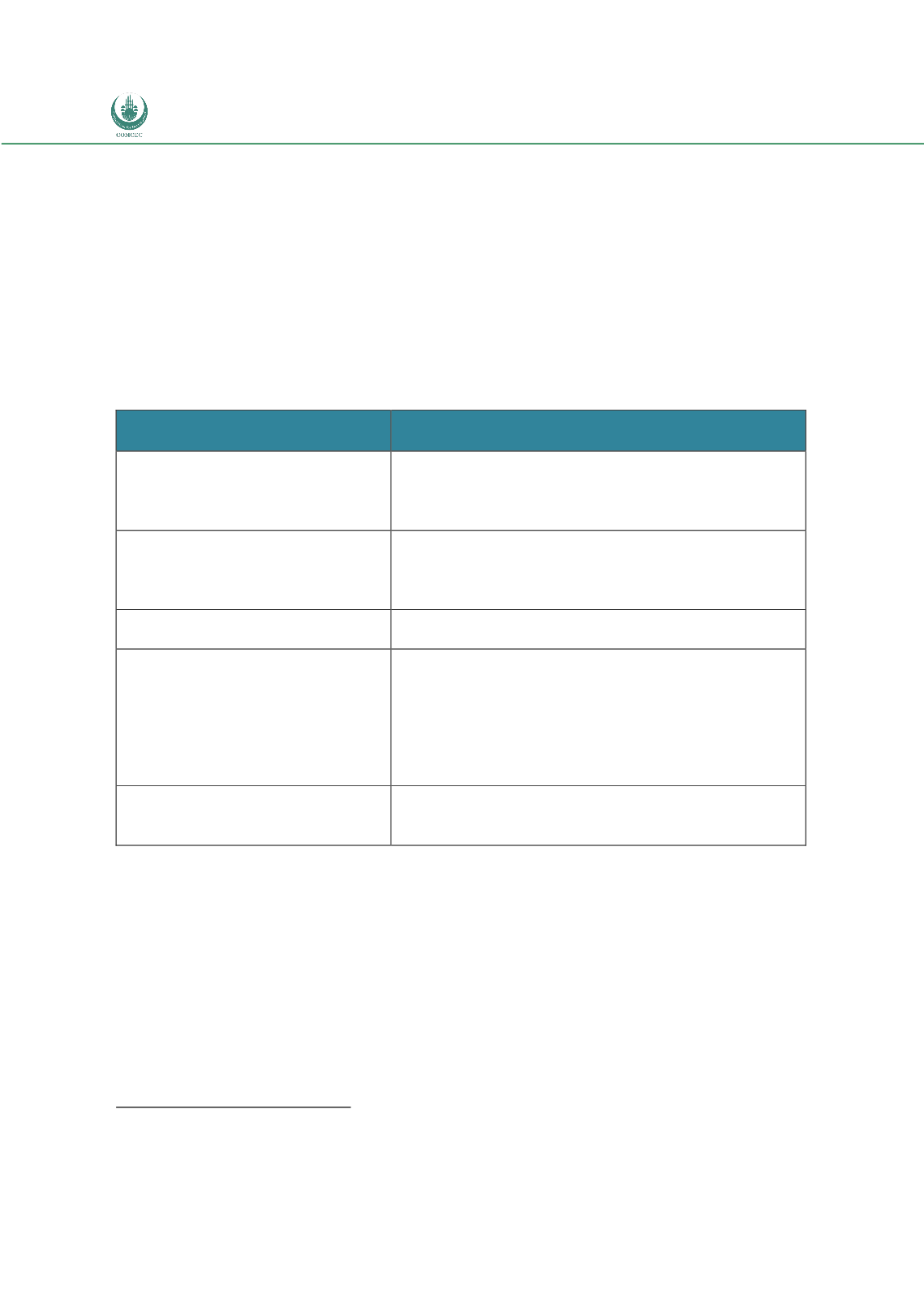

FACILITATING INTRA-OIC TRADE:
Improving the Efficiency of the Customs Procedures in the OIC Member States
58
For example Goorman (2004) examined the impact of the Peru’s customs reform which
was initiated in 1990. According to the study, within the reform process, customs laws
were harmonized and adapted to international standards. Customs Administration was
restructured, increased the number of professional personnel, an integrated computer
system was developed, shifted the emphasis of customs control to post-clearance audit
and adopted a new valuation and import verification program. The study concluded that,
as a result of these reforms, clearance time reduced from 20 days to 1-24 hours and the
revenues increased dramatically from USD 626 million to USD 2.403 million between
1990-2002 period. Table 10 demonstrates the impact of the Peru’s reform.
Table 10: Customs Administration Reform in Peru
1990 (pre-reform)
2002 (post-reform)
Tariff and Trade Regime
39 tariff rates, 14 surtaxes
Range of rates: 10-110
Prohibitions: 539 items
4 rates (7 rates including surtax)
Range of rates:4-25
Prohibitions: in 1997 25 items
Personnel and training
Total staff:4.700
Professionals: 2.5 percent of staff
No training program
Total staff: 2.540
Professionals: 60 percent of staff
One-year full time course at the National Customs School
Computerization
No computerization
All customs functions and operations computerized
Customs control and clearance
process
Paper declaration and process
100 percent physically checked
Payment at customs
Clearance times: over 20 days
Electronic declaration lodging and processing
Based on risk analysis, 15 percent physically checked
Payment at bank, electronic or otherwise
Clearance times: 1 to 24 hours depending on goods
category
Revenue Collection
USD 626 million
23 percent of budgetary revenue
USD 2.423 million
36 percent of budgetary revenue
Source: Milner et al. (2008) based on findings of Goorman (2004)
Another option for financing customs reforms is co-financing. International financial
institutions such as World Bank, ADB and IDB are giving special emphasis on
financing reform projects. For example, Kazakhstan’s customs reform project is one of
the comprehensive reform process which is worth of 62 million USD and was financed
by Kazakhstan and the World Bank (43,5 million USD is paid by the government and
18,5 million USD was financed by the World Bank). The project was initiated in 2007
and will be finalized by the end of 2014.
5
5
For more information visit
http://www.carecprogram.org/index.php?page=carec-project-details&pid=218

















